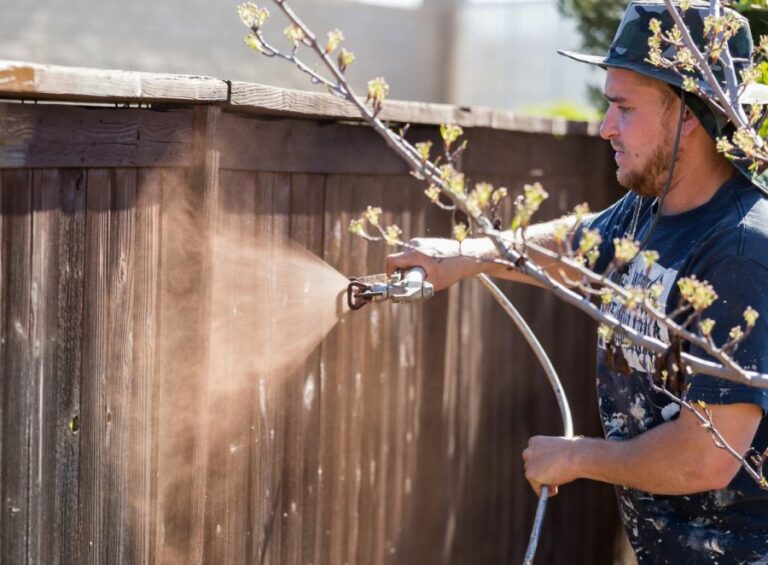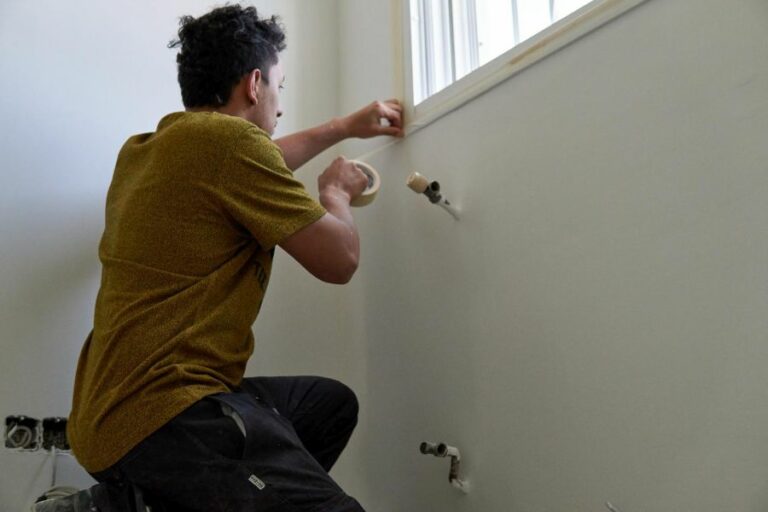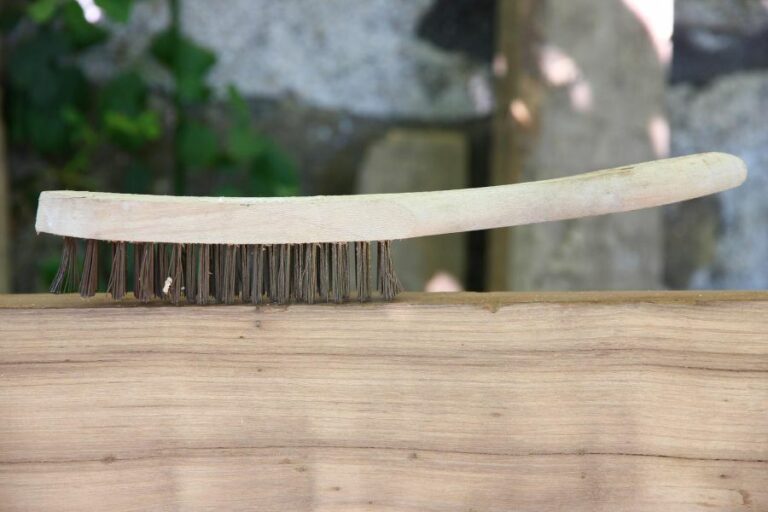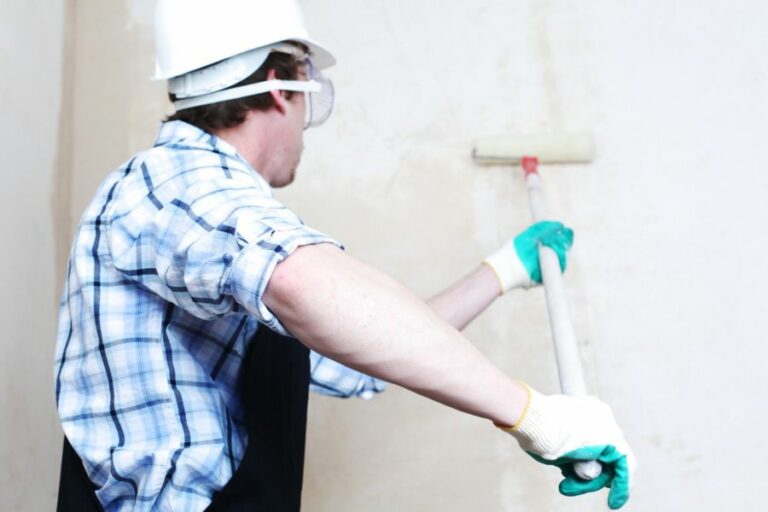Succeed In Smooth Paint Sand Scrape, 25 Things You Should Know
Are you tired of uneven paint jobs that make your walls look less than perfect? Don’t worry. We’ve got your back! To achieve a smooth paint finish, mastering the art of sanding and scraping is essential. Following our expert tips and tricks, you’ll transform those bumpy, unattractive surfaces into beautifully smooth canvases to showcase your chosen paint colors.
Succeed in smooth paint: sand & scrape:
To achieve a smooth paint finish, diligently prepare the surface by sanding and scraping. Use the appropriate sandpaper grit (coarse, medium, and fine), invest in proper scraping tools, and practice proper sanding (dry or wet) and scraping techniques. Sand between paint coats for a polished final product.

Discover the secrets to achieving a flawless paint job! Learn the importance of sanding and scraping, how to do it right, and the tools you’ll need. Don’t settle for less read on for expert tips and techniques to ensure a smooth, professional finish every time. Don’t miss out!
Contents
- 1 Achieve Flawless Paint: Sanding & Scraping Techniques
- 2 Attaining a Smooth Finish: Is Sanding Paint Possible?
- 3 Selecting Top-Quality Sandpaper for a Sleek Paint Job
- 4 Secrets to Getting an Ultra-Smooth Painted Finish
- 5 Minimal Sanding Smoothness Prior to Painting: A Guide
Achieve Flawless Paint: Sanding & Scraping Techniques
• The Importance of Surface Preparation
To achieve a professional, smooth paint finish on any surface, the key lies in diligent surface preparation. It is essential to sand and scrape the surfaces to remove existing paint, varnish, and other imperfections.
Failure to take this step seriously may result in a rough and uneven finish that won’t hold up well over time.
• Select the Right Sandpaper
The first aspect of surface preparation is selecting the appropriate sandpaper for your needs. There are various types of sandpaper available, varying in grit size and material used. It’s essential to choose the right one for your specific task to avoid causing damage to the surface.
– Coarse Grit
Start with lower-grit sandpaper (60-80 grit) to remove thick layers of paint or varnish. Coarse grit is also ideal for smoothing rough surfaces or repairing large imperfections.
– Medium Grit
Once the coarse grit has done its job, move on to medium-grit sandpaper (100-120 grit) to smooth out the remaining rough spots and create an even texture on the surface.
– Fine Grit
For the final touch, use fine-grit sandpaper (150-180 grit) to polish the surface and prepare it for paint. Fine grit is particularly suited for sanding between coats of paint to ensure a smooth finish.
• Invest in Proper Scraping Tools
To tackle stubborn layers of old paint and varnish, you will need a set of high-quality scraping tools in your arsenal. A combination of broad and narrow scrapers will come in handy for different surface areas and angles.
Additionally, a utility knife can be useful for precision scraping and accessing tight corners.
• The Right Way to Sand
– Dry Sanding
For most projects, dry sanding with a sanding block, an orbital sander, or a random orbital sander is recommended based on the surface size and type. Always wear proper safety equipment, including safety goggles, gloves, and a dust mask to protect yourself from fine dust particles.
- Begin with the coarse-grit sandpaper to remove heavy paint layers and imperfections.
- Continue with medium-grit sandpaper to smooth the surface further.
- Finish with fine-grit sandpaper to polish the surface and prepare it for paint.
Remember to sand with the grain of the wood to avoid damaging the surface.
– Wet Sanding
In some cases, wet sanding is a suitable alternative to traditional dry sanding. While it is generally reserved for more delicate surfaces and materials, it can also be beneficial for reducing dust and minimizing the risk of scratching the surface.
Before moving forward with wet sanding, ensure that the sandpaper you use is compatible with this method. Wet sanding requires maintaining a consistent, even pressure and keeping the sandpaper wet throughout the process.
• Scrape Off Old Paint
Proper scraping involves applying the right amount of pressure and using sharp, clean scraper blades. To avoid gouging or damaging the surface, hold the scraper at a 30-degree angle and use long, even strokes to lift the paint or varnish away.
For tricky spots or stubborn paint, you may need to apply a chemical paint remover or use a heat gun to loosen the paint before scraping.
• Sand & Scrape Between Coats
For a silky smooth finish, sanding between coats of paint is crucial. Once the first coat has dried completely, lightly sand the surface with fine-grit sandpaper to remove any imperfections or uneven spots.
This will allow the subsequent coats to adhere better to the surface, resulting in a polished final product. After sanding, remember to wipe down the surface with a damp cloth or tack cloth to remove any residual dust.
• Conclusion
By devoting sufficient time and effort to surface preparation, you can ensure a smooth and long-lasting paint finish for your project. Remember to select the right sandpaper, invest in quality scraping tools, and practice proper sanding and scraping techniques for the best results. Happy painting!
Attaining a Smooth Finish: Is Sanding Paint Possible?
Achieving a smooth paint finish is a crucial step in any painting project, whether it’s on furniture, cabinetry, or walls. One of the most common techniques to guarantee a silky smooth surface is sanding the paint.
• Why Sand Paint for a Smooth Finish?
Sanding paint is a necessary step to ensure a polished look on your project. It helps to remove any debris, brush marks, or imperfections left behind during the painting process.
Additionally, sanding the paint creates a slightly rough surface, enhancing the adhesion of subsequent paint layers or finishes.
• Choosing the Right Sandpaper
Selecting the appropriate sandpaper for your project is crucial to achieving a smooth finish. Sandpaper comes in various grit numbers, which indicate the roughness of the abrasive particles.
The lower the number, the coarser the sandpaper, while a higher number indicates finer sandpaper. For paint sanding, you will generally need two grit levels:
Medium Grit Sandpaper (120-150 grit): Use this to remove imperfections and create an even surface before painting.
Fine Grit Sandpaper (220-320 grit): This should be used after painting to smooth the surface and remove any brush marks.
In some cases, more delicate work may require ultra-fine sandpaper (400-600 grit) for an even smoother finish.
• Steps to Sand Paint for a Smooth Finish
- Preparation: Begin by cleaning the surface you will be sanding to remove any dust, dirt, or grease. Use a damp cloth for this purpose, and then allow the surface to air dry. If the paint is still wet, wait for it to dry completely before proceeding.
- Medium Grit Sanding: Once the surface is clean and dry, start sanding with medium grit sandpaper. Move your hand in a circular motion, applying constant pressure to the surface. Be sure to sand evenly, focusing on imperfections and brush marks.
- Dust Removal: After sanding with medium grit sandpaper, use a tack cloth or a damp cloth to remove dust and debris from the surface. Allow it to air dry before proceeding to the next step.
- Fine Grit Sanding: When the surface is clean and dust-free, sand it again using fine-grit sandpaper. This stage is essential for creating a smooth finish, so sand evenly and with care. Apply light pressure and avoid sanding too much in one area, as it may create an uneven surface.
- Final Dust Removal: After completing fine-grit sanding, use a tack cloth or damp cloth once more to remove dust and debris from the surface. Allow it to dry thoroughly before applying any additional paint or finish.
• Tips for a Successful Sanding Process
- Always sand in the direction of the wood grain to avoid scratches or swirl marks.
- Use a sanding block or a foam pad to maintain even pressure on the surface while sanding and to prevent accidental damage to the paint.
- Wear a dust mask and eye protection during the sanding process to protect yourself from dust particles.
- For large surfaces or multiple projects, consider using an orbital or palm sander to minimize hand fatigue and achieve consistent results.
- Do a final inspection after sanding to ensure all imperfections and brush marks are removed, and the surface feels smooth to the touch.
• When Not to Sand Paint
While sanding paint is generally helpful for achieving a smooth finish, there are a few instances when it may not be advisable:
- If the paint is already applied smoothly and free of imperfections or brush marks, sanding may be unnecessary and can potentially damage the surface.
- For textured finishes or specialty paints, sanding may destroy the desired effect or finish.
- Wood surfaces with a thin layer of paint may require special care. Over-sanding can remove the paint entirely and damage the wood surface.
In conclusion, sanding paint is an effective technique to ensure a smooth finish on various surfaces.
By selecting the appropriate sandpaper, following the proper steps, and observing the best practices mentioned in this guide, you can achieve professional-looking results for your painting projects.
Question | Answer |
|---|---|
Can you sand paint to get a smooth finish? | Yes, sanding paint can help achieve a smooth and even finish. Use fine-grit sandpaper and sand lightly in a circular motion to remove imperfections and create a smooth surface. Make sure to clean the surface of dust before applying the next coat of paint. |
Selecting Top-Quality Sandpaper for a Sleek Paint Job
Creating a smooth paint finish is an important task for any painting project. One essential tool to achieve this is sandpaper. There are many types of sandpaper available, and the best one for you depends on the surface you’re working on and the finish you desire.
• Understanding Grits and Grades
Before we look at specific sandpapers, it’s important to understand the concept of grits and grades. The grit of sandpaper refers to the size of abrasive particles it contains. Higher grit numbers indicate smaller particles, which provide a finer finish.
– Coarse Grit (40 to 80 Grit)
Ideal for initial rough sanding, removing paint, or leveling uneven surfaces, coarse grit sandpapers are great for shaping and smoothing materials quickly.
– Medium Grit (100 to 150 Grit)
Medium grit sandpapers are perfect for removing surface imperfections, smoothing, and preparing surfaces for paint. A 120-grit or 150-grit sandpaper is often used between paint coats.
– Fine Grit (180 to 220 Grit)
For achieving a fine, smooth finish on paint or between coats of varnish, fine-grit sandpapers are the best choice. Higher grit numbers, such as 220, are perfect for light sanding, scuff-sanding, and touch-ups.
– Extra-Fine Grit (240 to 400 Grit)
Individual grits in this category (such as 320, 360, and 400) are best for professional wet sanding and polishing of clearcoats, giving a flawless finish.
• Types of Sandpaper
Now that we understand grits and grades let’s discuss the different types of sandpaper and their specific applications.
– Aluminum Oxide Sandpaper
Aluminum oxide sandpaper is a popular choice for its durability and versatility. This sandpaper works well on various surfaces, including wood, metal, and plastic. It’s suitable for both manual and power sanding.
Expert Recommendation: For most paint projects, I recommend aluminum oxide sandpaper with a medium to fine (100-220) grit for the best smooth paint finish.
– Silicon Carbide Sandpaper
Also known as wet or dry sandpaper, silicon carbide sandpaper is waterproof and perfect for use with water or other lubricants to prevent material buildup. This sandpaper is suitable for metals and plastic surfaces, creating a smooth finish on automotive paint.
Expert Recommendation: If you’re working on automotive paint or require wet sanding, opt for silicon carbide sandpaper with a fine to extra-fine (180-400) grit.
– Garnet Sandpaper
Garnet sandpaper is an excellent choice for hand-sanding wood surfaces. This type of sandpaper wears down evenly, providing consistent results. However, it’s not suitable for metal or wet sanding.
Expert Recommendation: When working with wooden surfaces, consider using garnet sandpaper with medium to fine (100-220) grit.
– Ceramic Sandpaper
Ceramic sandpaper is best for heavy-duty projects that require durability and long-lasting performance. This sandpaper is perfect for hardwoods, metals, and paint removal.
Expert Recommendation: For heavy-duty projects, use ceramic sandpaper with a coarse to medium (40-150) grit.
• Additional Tips for Smooth Paint
Sandpaper is just one part of the equation when aiming for a smooth paint finish. Here are some additional expert tips to consider:
- Always start with a clean surface, free from dust and debris. A clean surface will ensure better adhesion of the paint and a smoother finish.
- Use a primer before painting to create a consistent surface and ensure that the paint adheres properly.
- Apply multiple thin coats of paint rather than one thick coat to achieve a smoother and more durable finish.
- Always sand between coats of paint, using fine grit (180-220) sandpaper to remove any imperfections and ensure a smooth topcoat.
- Consider using a paint conditioner like Floetrol to help reduce brush marks and roller lines, creating a smoother finish.
By selecting the appropriate sandpaper for your project and following these additional tips, you can achieve smooth paint results that will look professional and stand the test of time.
Type of Sandpaper | Application | Grit Size | Advantages |
|---|---|---|---|
Aluminum Oxide | General-purpose sanding, including wood, metal, and plastic | 220-240 Grit | Durable, long-lasting, and suitable for surfaces needing moderate smoothing |
Garnet | Bare wood sanding, especially for cabinets and furniture | 150-180 Grit | Produces a smooth finish, ideal for woodworking |
Silicon Carbide | Curved or irregular shapes, wet sanding, and between coats of paint | 320-400 Grit | Waterproof and can achieve a very fine finish |
Ceramic | Automotive paint, glass, metal, and very hard surfaces | 800-2000 Grit | Sharp and durable, ideal for fine finishing work |
Secrets to Getting an Ultra-Smooth Painted Finish
A flawless, smooth paint finish can enhance the appeal of any project, whether it’s a piece of furniture or a room in your home. This article will provide essential tips and techniques to achieve that perfect finish, from using quality materials to preparing the surfaces and applying the paint.
• Importance of Choosing the Right Materials
To set the stage for a smooth painting job, investing in high-quality paint, brushes, and rollers is paramount. Top-tier paints adhere better and are less likely to show brushstrokes, while quality brushes and rollers ensure a more even application.
I recommend using paint brands like Benjamin Moore or Sherwin Williams, as they’re known for their superior finish and durability.
– Selecting the Right Paintbrush
Choosing the appropriate brush plays a significant role in the final outcome. For a smooth paint finish, I recommend using brushes made from a blend of nylon and polyester.
This combination provides excellent paint pick-up and release, resulting in more even coverage. Aim for a brush with a chiseled edge for precise painting along edges and corners.
– Roller Covers for a Smooth Finish
Roller covers come in various thicknesses, known as naps. For the smoothest finish, opt for a roller cover with a short nap (such as a 1/4″ nap). These covers hold less paint but are ideal for achieving a thin, even coating on most surfaces.
• Proper Surface Preparation
A perfectly smooth paint finish heavily relies on the preparation of the surface you’re painting. Thorough preparation guarantees a more uniform and longer-lasting paint job.
– Cleaning the Surface
Before painting, ensure that the surface is clean and free of any dust, dirt, or grease; consider using a mild detergent for more effective cleaning. If mold or mildew is present, use a mixture of 3 parts water and 1 part bleach to clean the affected areas.
Ensure that the surface is completely dry before moving on to the next step.
– Repairing Damaged Areas
Inspect the surface for any damage, such as cracks or holes, and repair these issues using an appropriate patching material or filler. For more in-depth information on repair techniques, visit the U.S. General Services Administration (GSA) website.
After repairing the damaged areas, sand the patched spots smooth to create a seamless surface for painting.
– Sanding and Priming
For the ultimate smooth finish, it’s essential to sand the surface before applying paint. Sanding helps create better adhesion and removes any rough spots, making for a more even finish.
Start with medium-grit sandpaper (120 to 150 grit) and move to finer grits (220 grit) for the smoothest results. Remember to wipe the surface with a tack cloth to remove any sanding dust.
Priming the surface is another crucial step; it not only enhances paint adhesion but also helps improve coverage and leveling. Opt for a high-quality primer designed for the paint type you’re using, and apply it with a brush or roller, following the manufacturer’s instructions.
• Proper Painting Technique
Even with the best materials and surface preparation, a smooth paint finish can be jeopardized by improper painting techniques. Follow these tips to ensure a flawless application:
– Stirring the Paint
Stir the paint thoroughly, as pigments tend to settle at the bottom of the can, making the consistency uneven. Keep in mind that mixing is different from shaking, as shaking can introduce air bubbles that could lead to an uneven finish.
– Painting in the Correct Order
Start painting from the top to the bottom to avoid drips and allow more comfortable blending of wet paint. Paint the edges and corners first, called “cutting in,” using a quality brush. Afterward, proceed with the roller for larger surfaces.
– Proper Roller and Brush Techniques
When using a roller, apply paint in a “W” or “M” pattern and fill in the gaps without lifting the roller from the surface. This technique helps ensure even coverage and prevents roller marks.
For brush application, load the brush by dipping it about halfway into the paint, tapping it against the inside of the container, and wiping off any excess paint. Apply the paint using long, smooth strokes, working in the direction of the surface’s natural texture (such as the wood grain).
Avoid overworking the paint by going over the same spot multiple times, which can cause brush marks and an uneven finish.
– Allow Ample Drying Time
One of the most critical steps in achieving a super smooth paint finish is allowing adequate drying time before recoating. Rushing this stage can lead to issues such as lifting or wrinkling of the previous layer. Always refer to the manufacturer’s instructions for the recommended drying times.
• Final Thoughts
Achieving a super smooth paint finish requires attention to detail and patience, but the results are well worth the effort.
By choosing top-quality materials, diligently preparing the surface, and following proper painting techniques, you’ll be on your way to a stunning paint finish that will impress for years to come.
Minimal Sanding Smoothness Prior to Painting: A Guide
Sanding is an essential step when it comes to preparing surfaces for painting. It is a process that involves using abrasive materials to remove imperfections, create a smooth surface, and promote good adhesion between the paint and the surface.
• Understanding Sandpaper Grits
One of the key aspects of sanding is choosing the appropriate sandpaper grit. Sandpaper is available in various grits, which represent the size of the abrasive particles on the paper.
Lower grit numbers indicate larger particles and more aggressive abrasive action, while higher grit numbers mean smaller particles and a smoother finish.
- Coarse grit (40-60 grit): This type of sandpaper is ideal for removing heavy layers of old paint, varnish, or finish. It is best used for initial surface preparation when dealing with rough or uneven materials.
- Medium grit (80-120 grit): Medium grit sandpaper is versatile and can be used for removing moderate layers of paint or smoothing out rough surfaces. Most sanding projects will begin with this range of grits.
- Fine grit (150-180 grit): Fine-grit sandpaper is ideal for smoothing surfaces before the final painting. It is best used as a finishing step in your sanding process to create a smooth surface that promotes even paint application.
- Extra-fine grit (220-400 grit): This type of sandpaper is typically used for lighter tasks, such as between-coat sanding, to smooth out the surface and promote adhesion between paint layers.
• Determining the Smoothness Level
The smoothness level you should aim for largely depends on the surface material and the type of paint you plan to use. Here are some general guidelines for common types of surfaces:
– Wood Surfaces
For wooden surfaces, you should start with medium grit sandpaper (80-120 grit) to remove any imperfections, such as scratches or dings.
Afterward, progress towards finer grit sandpaper (150-180 grit) to achieve the desired smoothness. It is crucial not to over-sand the surface since it may cause the paint to have trouble adhering properly.
In my experience, I recommend using a palm sander or a sanding block to prevent gouging the wood and ensure consistent pressure on the surface.
– Metal Surfaces
For metal surfaces, as a general rule, you should use fine grit sandpaper (150-180 grit) to create a clean and smooth surface before painting. Sanding with a finer grit removes imperfections without excessively scuffing the metal.
I recommend using wet sanding with waterproof sandpaper or wet/dry sandpaper to reduce heat generation and metal particles. Wet sanding is a process that involves immersing the sandpaper in water and periodically re-wetting it during the sanding process.
– Walls and Ceilings
For walls and ceilings, start by patching any holes or cracks with the appropriate filler. Once the filler dries, sand the area using a medium grit paper (80-120 grit) to blend with the surrounding surface.
After that, use a fine grit sandpaper (150-180 grit) to smooth the entire surface to ensure an even paint application.
Keep in mind that drywall and plaster surfaces may require a special type of sandpaper called drywall sandpaper, which is specifically designed to work on these materials without causing excessive wear.
• Final Preparations Before Painting
After sanding your surface to the desired smoothness, it is essential to remove all dust and residue. This can be done by using a vacuum cleaner or compressed air to remove larger particles, and then wiping the surface with a slightly dampened cloth to remove any remaining fine dust.
Upon completing these steps, your surface will be prepared and ready to be painted. Adequately sanding your surface will ensure a smoother and more durable paint job, ultimately leading to a better-looking final product.
So, the next time you embark on a painting project, remember that taking the time to properly sand your surface will make all the difference in achieving a professional result.







